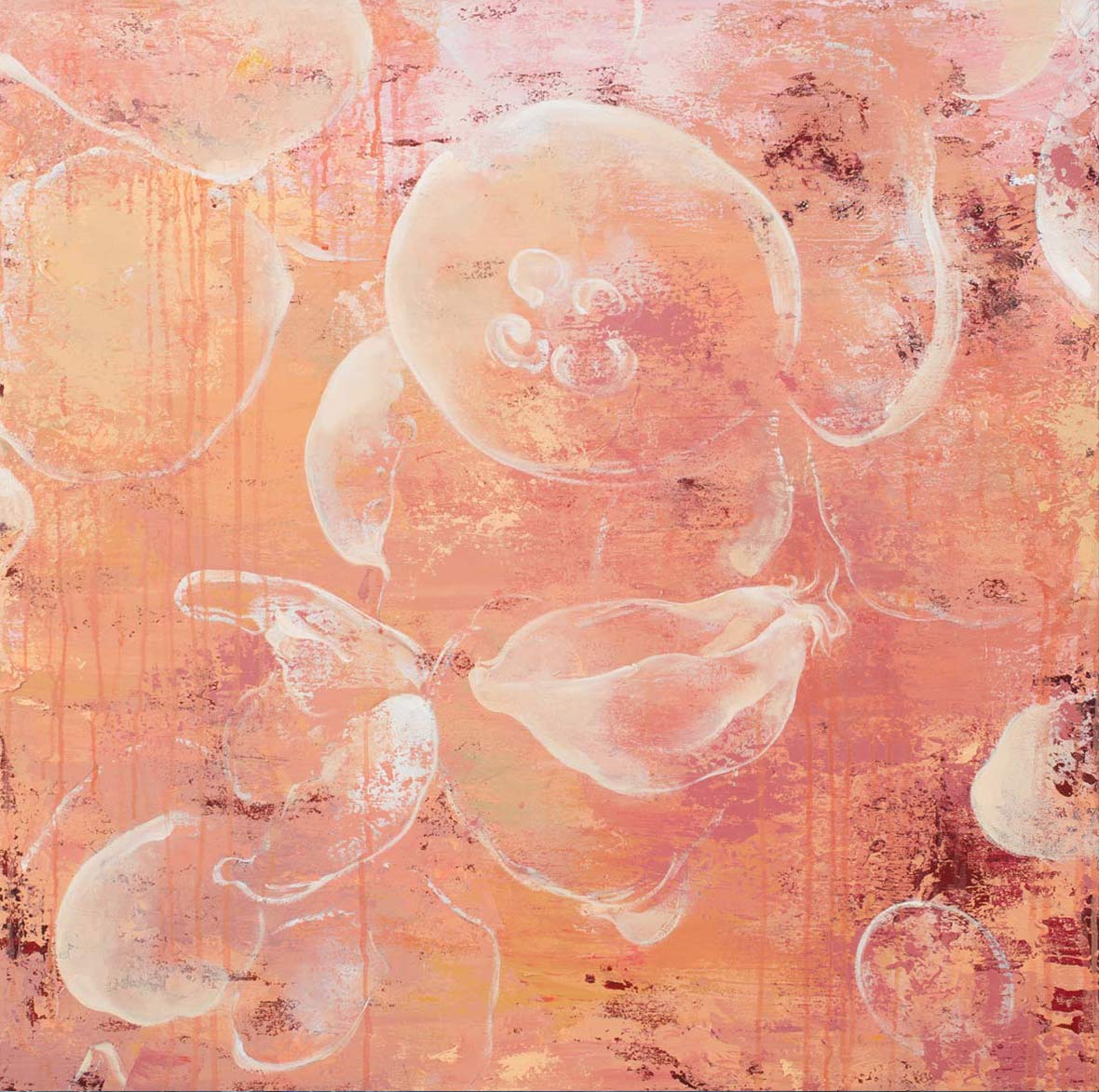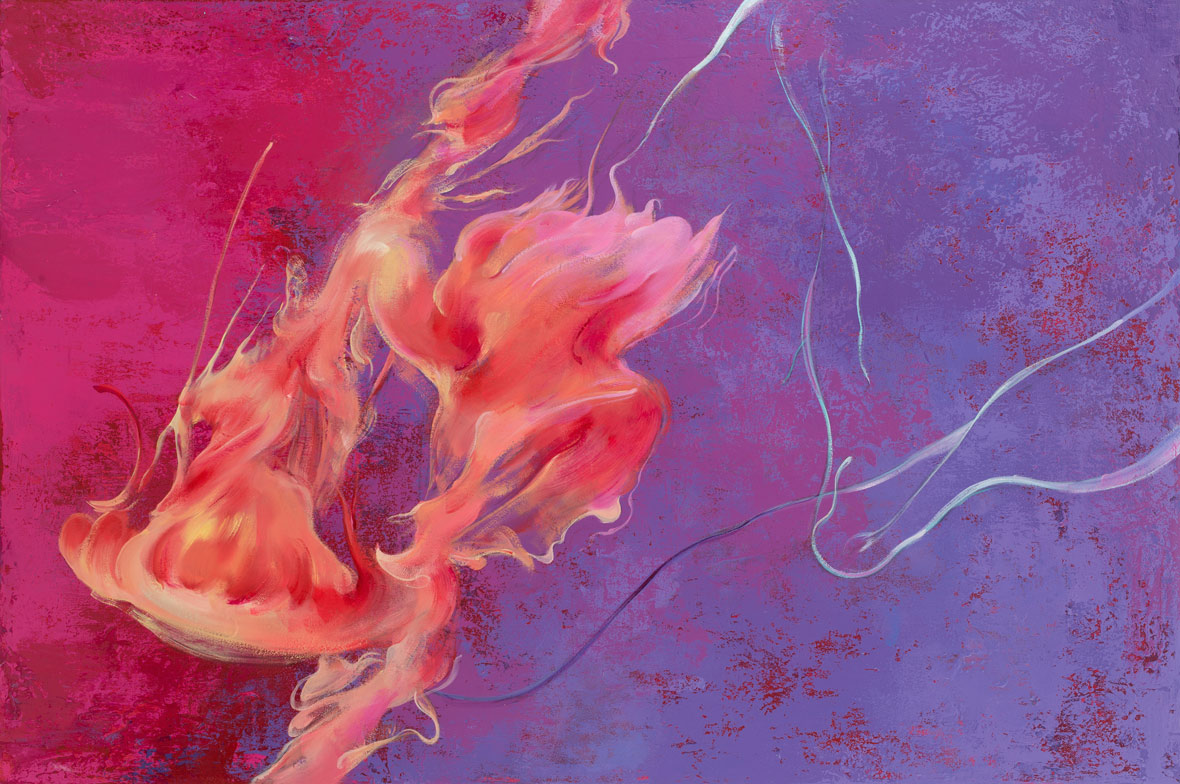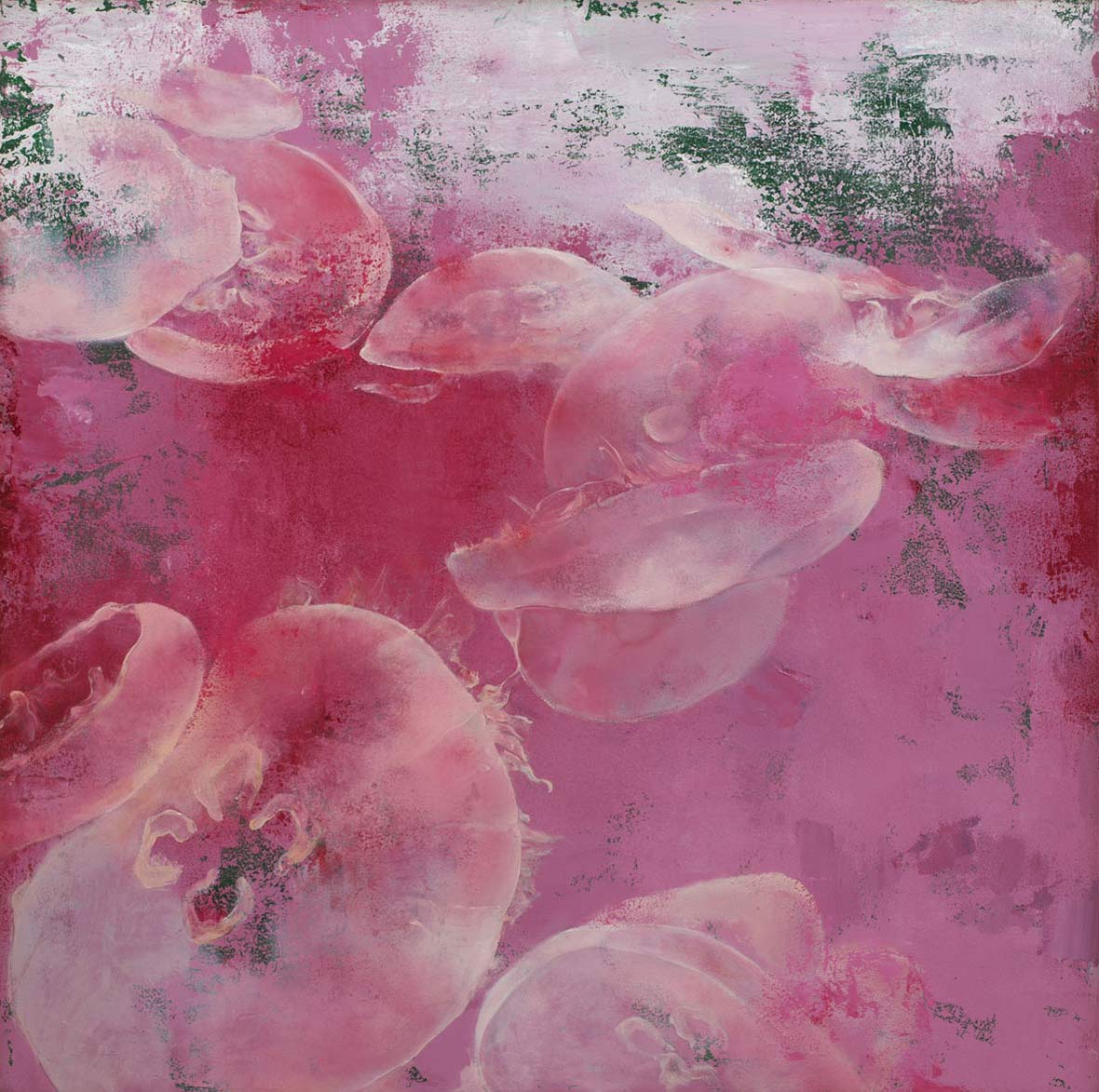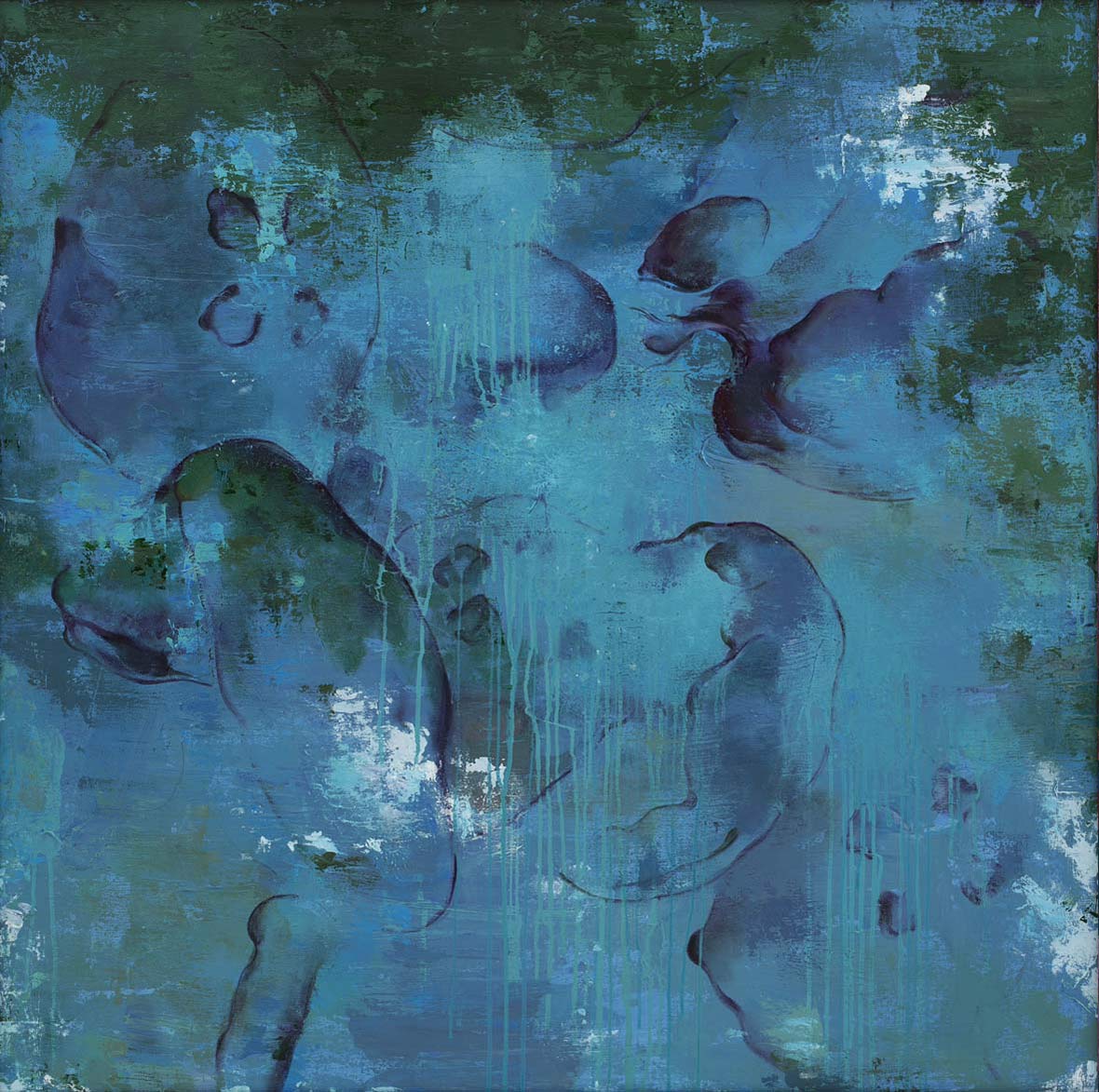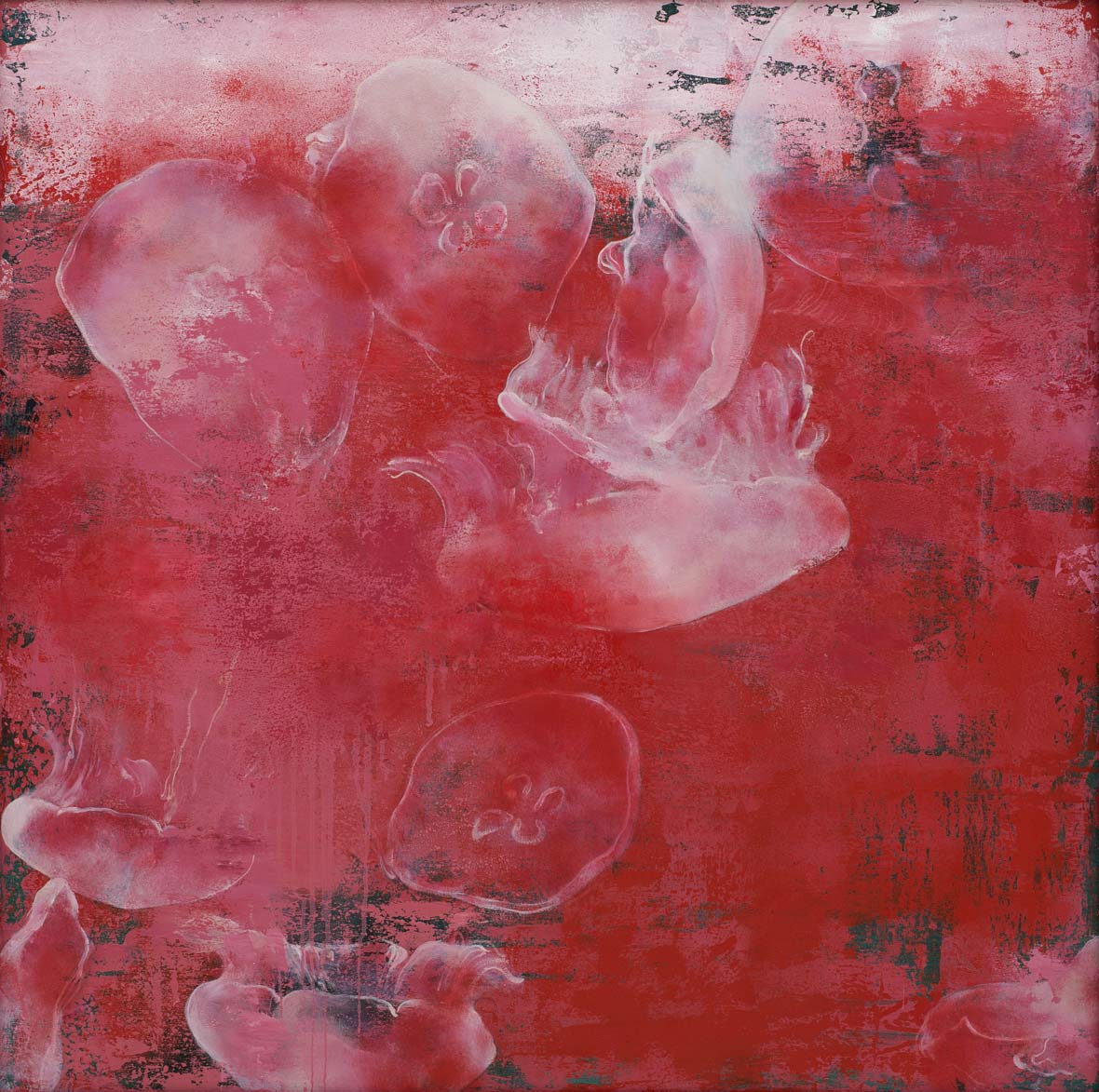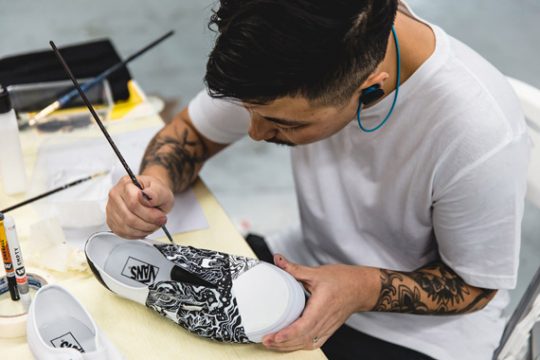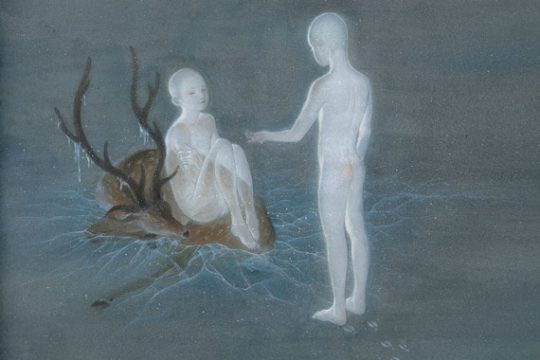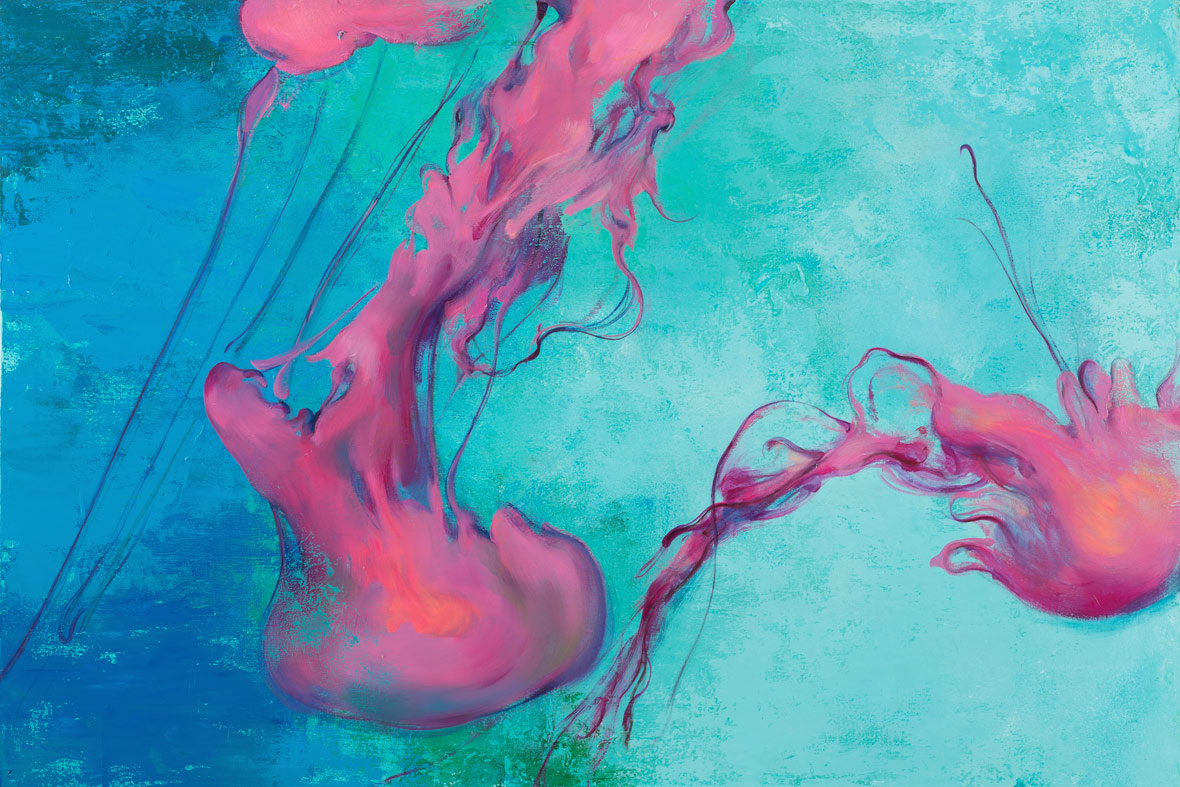
Born in 1990 in Shenyang, Xinmo Wu graduated in 2012 from the photography department of the Luxun Academy of Fine Arts and is currently based in Shanghai. Wu has always had a natural fascination with jellyfish, at first capturing their forms through photography, and later casting them as subjects in her illustration and installation work. From fascination to borderline obsession to observant detachment, Wu’s relationship to this subject matter has been a continual process of change.
吴欣默,1990年出生于辽宁省沈阳市,2012年毕业于鲁迅美术学院摄影系,目前工作和生活在上海。水母这种浮游生物对于吴欣默而言,有着天生的吸引力,从最初通过摄影去捕捉他们的姿态,到现在借助绘画甚至装置去表现。她经历了一个从吸引到陷入,再从陷入到抽离的过程。
Separating these aquatic animals from their backgrounds through color and form, the jellyfishes seem to be fossilized in the canvas, immortalized in images resembling a photo negative. Wu presents a message through her reinterpretation of jellyfishes, using the images as a metaphorical device to explore concepts of identity and gender. In the natural world, jellyfishes are able to reproduce asexually at certain stages of their life cycle, attaining a sort of immortality through their self-replication. But people often project gender attributes onto them, viewing their gentle, flowing forms as feminine, sensual, or even erotic. In our internet-driven world, concepts of femininity are constantly reassigned and redefined, fed to the population in the form of digital media. But when we set our preconceptions aside, perhaps we’re left with an opportunity to understand that being authentic is more important than conforming to society’s ideals of feminity.
当你看着这些匿浮于画板之上的水母时,将体会到她想通过作品传达给我们的信息。它们被从水里分离出来,如同化石,又被置于一块胶片负片肌理的画板上。在自然界,水母可以通过无性繁殖,并在复制自我的过程里达到永生。但是在观众眼中,水母柔软而飘忽的身体却往往被赋予女性化的象征,甚至还有色情与欲望的隐喻。一如目前这个以互联网为主导的媒体环境,年轻女性随波逐流、飘忽不定的形象,被如海水一般的互联网所塑造和加深。而当海水退去后,留在我们脑海里的,却仅仅只是这样的印象,仿佛她们天生就是这样。
